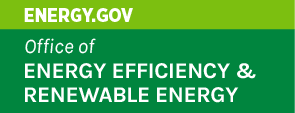
Wind Energy Technologies Office
October 1, 2019
The U.S. Department of Energy (DOE) Office of Energy Efficiency and Renewable Energy’s Wind Energy Technologies Office (WETO) provides global leadership in fundamental wind energy science research, development, and validation activities that enable low-cost wind energy. The office pursues opportunities across all U.S. wind sectors—land-based utility-scale wind, offshore wind, distributed wind, and system integration. As we embark on a new fiscal year (the federal government fiscal year runs from October to September), we’d like to share some of our key accomplishments from Fiscal Year 2019.
Wind Plant Controls
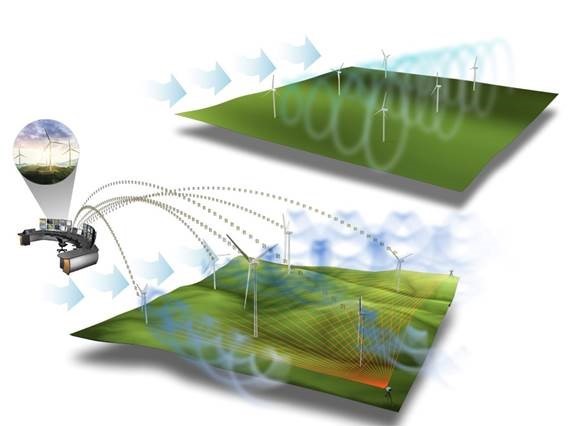 |
| Josh Bauer, NREL |
The Wind Energy Technologies Office (WETO) demonstrated how wake steering—a form of wind plant control that coordinates wind turbines within a plant—can increase plant output. The technique was pioneered by DOE and its National Renewable Energy Laboratory (NREL) The results of field trials at a commercial NextEra wind plant were consistent with supercomputer modeling simulations from WETO’s Atmosphere to Electrons program. The trials showed that coordinating the control of individual turbines through wake steering can improve the performance of an entire wind plant, increasing annual energy production by 1–2%. Such improvements can increase annual profits by $1 million or more, depending on the plant size and design. The modeling suggests, further, that an even greater gain of an additional 2–5% annual energy production is possible using a new “wind plant consensus” control strategy, which leverages turbine-to-turbine communications under field operating conditions.
Tall Wind
Through WETO’s Tall Wind initiative, innovations in taller wind towers and larger rotors can open up new areas of the country to wind power development, while boosting output elsewhere. WETO worked with DOE’s Berkeley Lab and DNV GL to study key design, manufacturing, and transportation options to facilitate the use of longer blades, and with NREL to understand the opportunities for increasing tower heights to 110–140 meters.
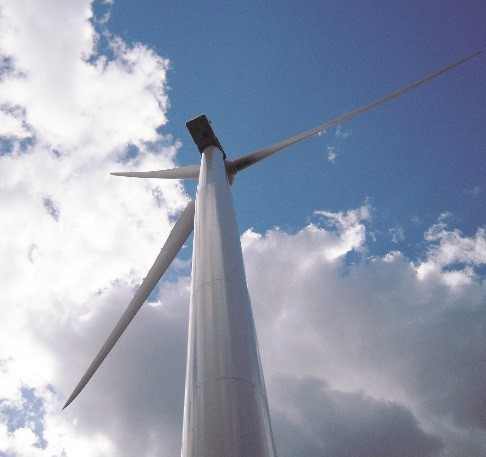 |
| Deborah Donovan, Sustainable Energy Advantage, LLC |
Material Science
DOE’s Sandia and Oak Ridge National Laboratories concluded a two-year study demonstrating the commercial viability of cost-competitive carbon fiber composites tailored for use in wind turbine blades. The material—a heavy-tow textile carbon fiber—has improved mechanical properties compared to baseline carbon fiber materials and can provide system-level benefits in the manufacture of long, slender wind turbine blades.
Lightweight Generators
WETO selected three projects to develop more efficient, smaller, and lighter-weight generators that can lower costs and make wind power more affordable. WEG is developing a direct drive generator and American Superconductor and GE are developing superconducting generators.
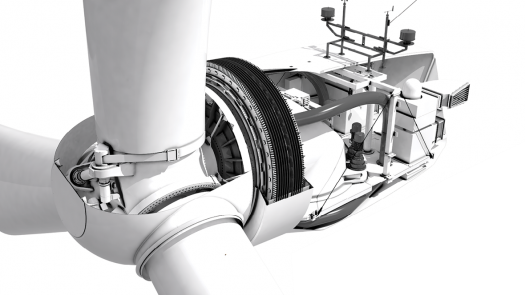 |
| Windpower Engineering |
Reliability R&D
 |
| Jon Keller, NREL |
Gearbox failures remain leading cause of wind turbine downtime, primarily driven by cracks forming in the bearings. A WETO-funded multi-lab and industry project to understand bearing failures in wind turbine gearboxes developed a methodology to calculate bearing damage and the probability of bearing failure. This methodology enables a reliability assessment and prognosis of bearing axial cracking in individual wind turbines. It also yields a forecast of reliability, which can inform bearing design, controller settings, and turbine operations.
Autonomous Inspection
 |
| Randy Montoya |
A WETO-funded project at DOE’s Sandia National Laboratories deployed and started testing a second-generation robot-deployed autonomous inspection system for wind turbine blades. The “crawler” robot moves along the blade and uses cameras to inspect surface damage and ultrasonic imaging to detect damage inside the blades. Wind turbines are often deployed in remote locations, and their blades—which are some of the largest single-piece composite structures in the world—are subject to weather and other forms of damage. The autonomous system reduces the need for manual inspections, which can be costly and time-consuming.
Offshore Wind
WETO has partnered with the New York State Energy Research and Development Authority to launch a $41-million offshore wind R&D consortium. The R&D will address U.S.-specific challenges such as offshore wind plant technology development, innovative wind resource and site characterization methodologies, and advanced technology solutions for installation, operation, maintenance, and supply chain. In 2019 the Consortium launched its first set of RFPs, selected one funding award, and hired its Executive Director.
 |
| Dennis Schroeder, NREL |
Distributed Wind
WETO and its National Renewable Energy Laboratory led the development of a new task under the International Energy Agency’s (IEA’s) Wind Technical Collaboration Program, which was approved by IEA in March, 2019. Task 41: Enabling Wind to Contribute to a Distributed Energy Future will be a nine-country collaboration led by NREL to support distributed wind turbine design standards development, integration of wind with other distributed energy resources in microgrid applications, and establishment of a data sharing catalog.
Environmental Impacts R&D
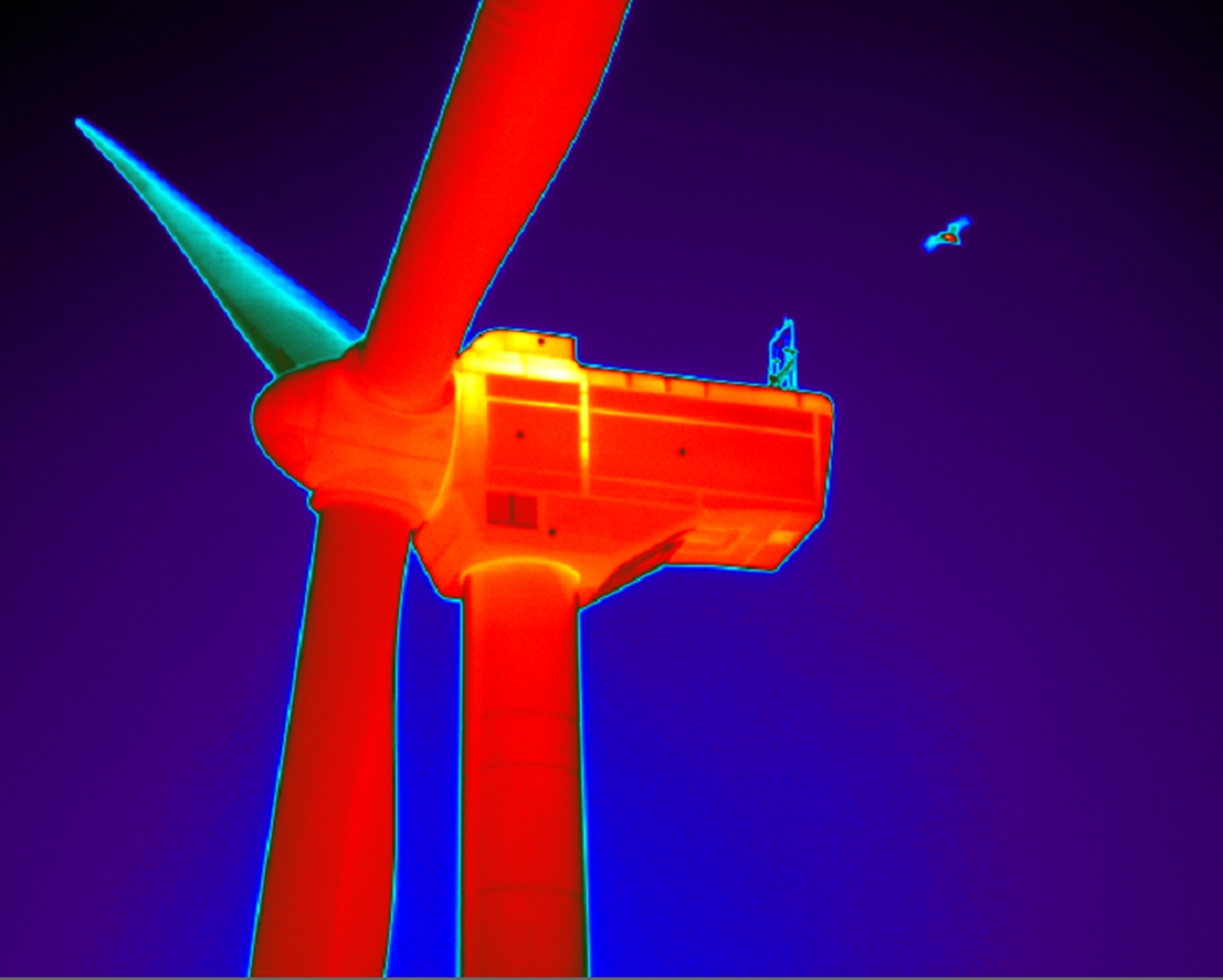 |
| M R Schirmacher |
WETO awarded $7 million in federal funds to 10 projects that will reduce environmental compliance costs and environmental impacts of land-based and offshore wind energy. This marks the largest investment in work of this kind in WETO history. This research will advance the further development and improvement of deterrent technologies to keep bats safe around wind turbines, advance smart curtailment strategies to minimize energy loss from curtailment and wind plant environmental impacts to bats, and resolve key gaps in offshore wind environmental monitoring capabilities. This work builds on previous research efforts funded by DOE that have resulted in commercial deterrent technologies and curtailment strategies that reduce impacts to bats at wind plants.
U.S. Wind Turbine Database
The U.S. Wind Turbine Database—the primary source for industry and government in evaluating the impacts of wind development on radar systems for flight safety, national security, and weather—reached 2.5 million user hits.
 |
| U.S. Geological Survey |
Radar Interference Mitigation
Federal inter-agency research efforts, led by DOE, are aimed at minimizing the impacts of wind turbines on radar systems. Recent results proved that an infill radar can be successfully integrated into air traffic control (ATC) operations to mitigate the impacts of wind development on ATC radars.
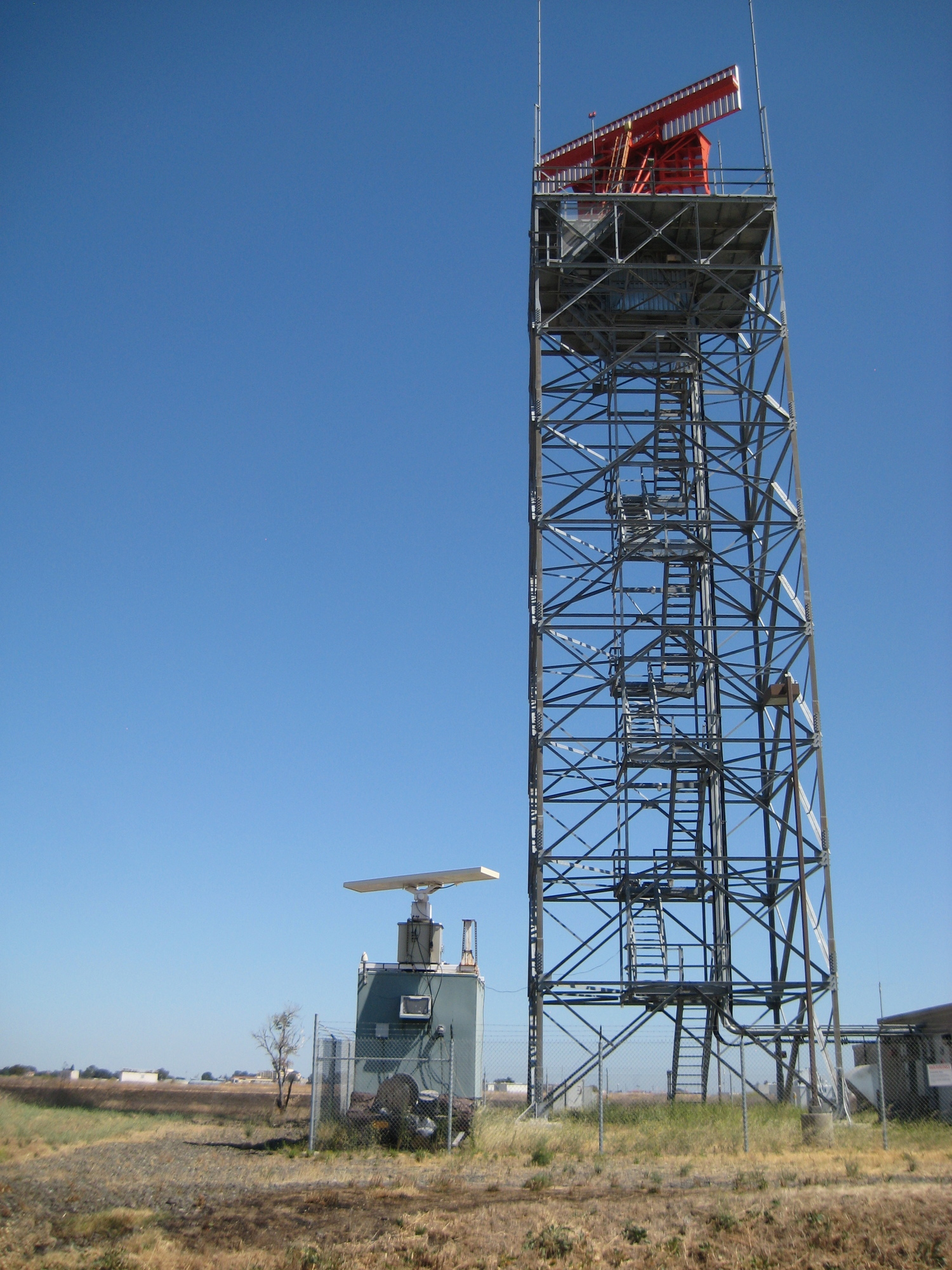 |
| David Mazel, Regulus Group |
Grid Services
NREL and Avangrid demonstrated wind energy’s capability to provide essential reliability services at a commercial wind plant in California. Earlier tests showed that wind could provide active power ramping support, as well as voltage and reactive power support. In August 2019, the California grid operator completed the last of a series of tests, which demonstrated, additionally, the ability for wind turbine generators to provide frequency regulation service.
Grid Operator Tools
NREL released a beta version of WindView, an open source visualization tool that unifies probabilistic wind forecast data with map-based visualization. Through an interactive map, grid operators can view aggregated forecasts for selected wind plants and set up customizable alerts, facilitating their decision making as the amount of wind energy on the grid increases. The tool was developed by DOE’s Argonne National Laboratory and NREL.
STEM and Workforce Development
WETO hosted the 6th annual Collegiate Wind Competition at the NREL Flat Irons campus in May 2019. Using NREL’s custom-built wind tunnels, students from 12 schools tested the performance of wind turbines that they designed and built. The schools also participated in plant design and siting competitions. NREL also released a WETO-funded report detailing current and future wind workforce training needs and gaps.
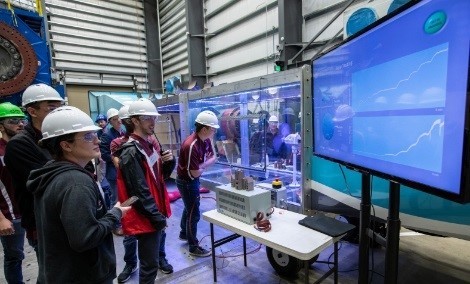 |
| Werner Slocum, NREL |
|